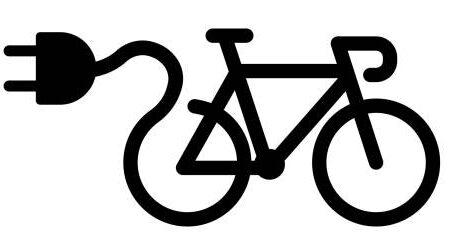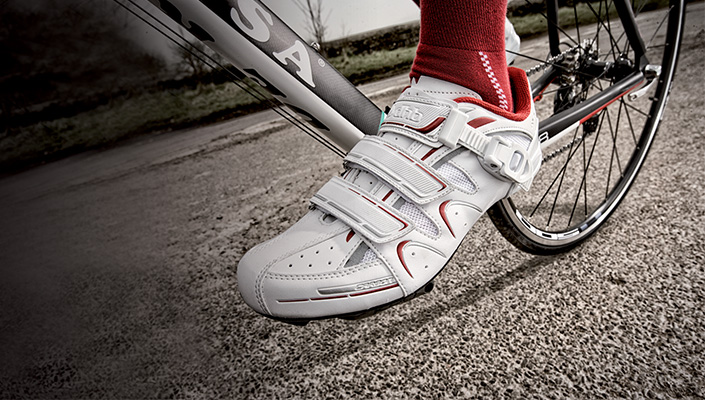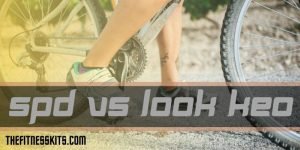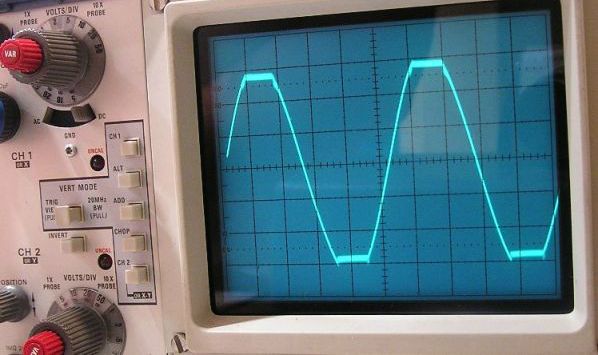Understanding Clipless Pedal Systems
Clipless pedals represent a significant advancement in cycling technology, offering a connection between cyclist and bicycle far surpassing that of traditional flat pedals. Unlike flat pedals, where the foot rests loosely on the pedal’s surface, clipless pedals engage with specially designed clip shoes and pedals, creating a secure and efficient connection. This connection translates to increased power transfer, meaning more of the rider’s energy is directed towards propelling the bicycle forward, resulting in greater speed and efficiency. The enhanced connection also provides superior control, particularly during challenging maneuvers or descents, enabling more precise handling of the bike. Furthermore, the secure connection inherent in clip shoes and pedals enhances safety by reducing the risk of foot slippage, which is especially crucial during sudden stops or unexpected obstacles. Several systems exist, each with its own compatibility and characteristics. Prominent examples include Shimano SPD (used widely in mountain biking and for its dual-sided entry), SPD-SL (predominantly used in road cycling), and Look Keo (another popular road cycling system known for its ease of engagement). Choosing the right system is crucial and depends heavily on the type of riding one undertakes. The choice impacts performance, comfort, and overall enjoyment of the cycling experience. Understanding these subtle yet vital differences is key to selecting the ideal clip shoes and pedals for individual needs. The correct selection of clip shoes and pedals can dramatically impact the efficiency and enjoyment of any cycling activity.
The benefits of using clipless pedals extend beyond simple performance gains. The improved power transfer allows cyclists to maintain a higher cadence (pedal speed) with less effort. This can lead to significant improvements in endurance and overall performance. The enhanced control afforded by the secure connection between shoes and pedals allows riders to navigate challenging terrain or technical sections of a ride with greater confidence. For example, mountain bikers frequently use clip shoes and pedals due to the need for precise control on uneven surfaces. The precise connection of clip shoes and pedals allows more nuanced control and precision over bike movement, making technical climbs and descents more manageable. This improved control also contributes to safety, reducing the risk of accidents. Finally, the wide array of clip shoes and pedals available provides a level of customizability allowing cyclists to find the perfect fit and functionality tailored to their particular riding style. This individualization allows riders to personalize their riding experience, further enhancing comfort and performance. The ongoing evolution of clip shoes and pedals reflects a continuous striving for increased efficiency and rider satisfaction.
When considering clipless pedals, understanding compatibility is paramount. Different pedal systems utilize unique cleat designs, meaning that a shoe designed for one system will not work with another. This necessitates choosing both pedals and shoes from the same system. For instance, Shimano SPD shoes will only work with Shimano SPD pedals. This compatibility factor is a crucial aspect to keep in mind when researching and selecting clip shoes and pedals. A wide variety of clip shoes and pedals are available to suit diverse riding styles and preferences. This selection allows cyclists to find the optimal combination that precisely aligns with their needs, increasing comfort, performance and safety. Therefore, understanding the different systems and their compatibility is critical to make an informed and beneficial selection.
Choosing the Right Cycling Shoes for Clip Shoes and Pedals
Selecting the appropriate cycling shoes is crucial for comfort, performance, and injury prevention when using clip shoes and pedals. The stiffness of the sole is a primary consideration. Stiffer soles, often made from carbon fiber, provide more efficient power transfer to the pedals, making them ideal for road cycling and time trials. However, less stiff soles, typically constructed from nylon or a nylon composite, offer greater comfort and flexibility, which are advantageous for mountain biking or longer rides where comfort is paramount. The material of the shoe upper also impacts comfort and durability. Synthetic materials are often lightweight and easy to clean, while leather offers breathability and a more luxurious feel. Different closure systems—BOA dials, Velcro straps, or traditional laces—cater to individual preferences and provide varying levels of adjustability for a secure and comfortable fit. Consider the climate and your riding conditions when choosing materials; breathable mesh is ideal for hot weather, while water-resistant materials are better suited for wet conditions. The sole design itself is important, especially for clip shoes and pedals; look for soles that provide a secure platform for engagement with the cleats and adequate grip when walking.
Proper fit is paramount when choosing cycling shoes and using clip shoes and pedals; ill-fitting shoes can lead to discomfort, hotspots, numbness, and even injury. Shoes that are too tight restrict blood flow and can cause nerve compression. Conversely, shoes that are too loose can result in instability and reduced power transfer. When trying on cycling shoes, ensure adequate space in the toe box to allow for slight movement during pedaling. The heel should be snug but not constricting. Consider wearing the socks you’ll typically use while cycling to get the most accurate fit assessment. Many manufacturers offer different width options to accommodate various foot shapes, further enhancing the chance of finding the perfect fit. It’s advisable to walk around in the shoes for a few minutes to assess comfort and identify any potential pressure points before making a purchase. Remember, a well-fitting shoe is essential for a positive experience with clip shoes and pedals.
Beyond the technical aspects, comfort plays a significant role in the enjoyment of cycling, particularly when using clip shoes and pedals. Features like padded insoles, breathable uppers, and ergonomic designs all contribute to a more comfortable ride. The overall fit should feel snug but not restrictive, allowing for efficient power transfer without compromising comfort. Remember to account for any potential swelling that may occur during longer rides; shoes that feel slightly roomy when initially tried on may be more comfortable after several hours of cycling. Finally, choosing the right cycling shoes is a crucial step in optimizing performance and comfort, especially when incorporating clip shoes and pedals into your cycling routine. The right shoe ensures efficient power transfer, stability, and ultimately, a more enjoyable riding experience.
How to Choose Clipless Pedals Based on Riding Style
Selecting the right clipless pedals significantly impacts cycling performance and enjoyment. The ideal choice depends heavily on riding style and terrain. Road cyclists, prioritizing efficiency and speed on paved surfaces, often favor pedals like Shimano SPD-SL. These pedals offer a large platform for efficient power transfer and are designed for smooth, consistent pedaling. The clip shoes and pedals systems are very important for cycling. Consider the weight and stiffness of the pedals; lighter options are advantageous for road cycling, while stiffer pedals enhance power transfer, making them a worthwhile investment for serious road cyclists. Remember to consider the compatibility of your clip shoes and pedals.
Mountain bikers, navigating varied terrain, generally opt for Shimano SPD pedals. These pedals offer a smaller platform, improving ground clearance and maneuverability in technical sections. SPD pedals are known for their durability and reliable engagement, crucial features when tackling rocks, roots, and mud. The clip shoes and pedals are designed to provide excellent grip and stability, even on uneven surfaces. Their relatively low profile reduces the risk of catching on obstacles. Furthermore, SPD pedals are compatible with various shoe styles and many clip shoes and pedals offer walkability features, allowing cyclists to dismount and walk comfortably.
Gravel riding presents a unique challenge, requiring a balance of efficiency and off-road capability. Cyclists often choose pedals that bridge the gap between road and mountain bike systems. Some riders might opt for SPD pedals for their versatility and reliable engagement, while others might choose road-style pedals if the gravel routes are predominantly smooth. Ultimately, the best choice depends on individual preferences and typical terrain. The selection of clip shoes and pedals for gravel should carefully consider factors like weight, durability, and ease of clipping in and out. Consider which terrain features most prominently in your rides to guide your decision. Finding the perfect combination of clip shoes and pedals improves your cycling experience and enables you to fully exploit your potential.
Shimano SPD vs. Look Keo: A Detailed Comparison
Shimano SPD and Look Keo represent two leading clipless pedal systems, each catering to different riding styles and preferences. Understanding their key differences is crucial for selecting the optimal system for individual needs. Shimano SPD pedals, known for their versatility and durability, are a popular choice among mountain bikers and commuters. Their relatively small platform and dual-sided entry mechanism offer ease of clipping in and out, even in challenging off-road conditions. The SPD system is renowned for its reliability and is frequently chosen for its robust construction, making it ideal for demanding terrains. This system is often paired with clip shoes and pedals designed for off-road adventures, ensuring a secure connection even over rough surfaces. Their relatively low profile and recessed cleat design minimize the risk of pedal strikes, a significant advantage for mountain biking and gravel riding.
Look Keo pedals, on the other hand, are favored by road cyclists for their large platform, efficient power transfer, and sleek design. These pedals typically feature a higher stack height and offer a more efficient connection with the clip shoes and pedals, making them well-suited for high-cadence road riding. The single-sided entry mechanism, while less forgiving than SPD’s dual-sided design, is often preferred by road cyclists for its precise and secure engagement. Look Keo systems are often chosen in conjunction with stiff-soled road cycling shoes, maximizing power transfer during high-intensity efforts. However, the higher stack height can increase the risk of pedal strikes, particularly during cornering or riding over uneven road surfaces. The choice between Look Keo and Shimano SPD often comes down to personal preference and riding style, with many cyclists finding the best solution lies in choosing the clip shoes and pedals that best suit their needs. Weight is another factor; Look Keo pedals are generally lighter than SPD pedals, a benefit for performance-oriented riders.
Maintenance is another key consideration. Both systems require regular cleaning and lubrication to ensure smooth operation and longevity. Shimano SPD pedals are generally considered easier to maintain due to their simpler design, while Look Keo pedals, while requiring more meticulous attention, generally offer greater durability if properly cared for. When considering clip shoes and pedals, remember that proper fit is essential for both comfort and performance. Both SPD and Keo systems offer various cleat float adjustments to accommodate different foot biomechanics and riding styles. The best choice ultimately depends on the rider’s individual needs and preferences, making the selection process a personal one. Careful consideration of factors such as riding style, terrain, desired level of power transfer, and ease of use will guide riders to the perfect clip shoes and pedals combination.
Top Recommendations: Best Clipless Pedal and Shoe Combinations
Selecting the optimal combination of clip shoes and pedals significantly impacts performance and comfort. Several excellent choices cater to various riding styles and budgets. For road cycling, the Shimano SH-RC902 shoes paired with Shimano Dura-Ace pedals offer a high-performance, lightweight, and incredibly efficient system. The SH-RC902 shoes are renowned for their exceptional stiffness and snug fit, maximizing power transfer to the pedals. The Dura-Ace pedals provide a secure and reliable connection, crucial for sustained efforts during road rides. This combination represents a top-tier option for serious road cyclists seeking peak performance. Another excellent road option is the Giro Empire series of shoes; its comfort and effective power transfer when paired with Look Keo pedals (known for their ease of use and adjustability) makes for a great all-around choice for many riders. Remember that selecting clip shoes and pedals requires considering individual foot shape and riding style.
In the realm of mountain biking, Shimano’s SPD system remains a dominant force. The Shimano MT5 shoes, known for their robust construction and excellent grip, work seamlessly with Shimano XT or XTR SPD pedals. This setup provides a secure connection even in challenging terrain, essential for maintaining control and stability. The SPD pedals’ relatively low profile minimizes the risk of pedal strikes on rocks and roots, enhancing the overall riding experience. For gravel riding, a versatile option involves choosing shoes that blend comfort and stiffness, such as the Specialized S-Works Recon. These shoes, known for their adaptability, are compatible with multiple pedal systems, including both SPD and Look Keo, providing riders with choice and adaptability based on their preferences and riding conditions. Consider carefully the terrain and your riding intensity when selecting your clip shoes and pedals for gravel.
Beyond specific model recommendations, remember that finding the right fit is paramount. Properly fitting clip shoes and pedals are crucial for preventing discomfort and potential injuries. The interaction between your foot and the pedal system should feel secure and supportive, allowing for efficient power transfer while minimizing hot spots or pressure points. Experimenting with different shoe sizes and pedal adjustments may be necessary to achieve the optimal fit and maximize performance. When choosing clip shoes and pedals, prioritize comfort and a secure connection to ensure a safe and enjoyable ride.
Mastering the Art of Clipping In and Out
Clipping in and out of clip shoes and pedals smoothly and efficiently is crucial for a safe and enjoyable cycling experience. Begin by positioning your foot over the pedal, ensuring the cleat is aligned with the pedal mechanism. A slight downward pressure, combined with a twisting motion (usually towards the rear of the bike), will securely engage the clip shoes and pedals. Practice this movement in a safe, stationary environment before attempting it while riding. Remember, the angle and pressure required will vary depending on the specific clip shoes and pedals system being used. Consult your pedal and shoe manufacturer’s instructions for precise guidance. Always ensure your cleats are properly adjusted and maintained to guarantee a secure connection and effortless release.
To unclip, slightly rotate your heel outward (usually away from the bicycle) while simultaneously applying upward pressure. The release mechanism should disengage, allowing your foot to clear the pedal. Practice this maneuver repeatedly until it becomes second nature; quick and confident disengagement is particularly important when navigating obstacles, slowing down, or coming to a stop. One common mistake is applying too much pressure straight down when attempting to unclip; focus on that heel rotation. Remember, proper technique with clip shoes and pedals is key to preventing accidents and ensuring a comfortable ride. As you gain confidence, you’ll notice an increased ability to transition between clipped-in and clipped-out states, enhancing your overall cycling experience with clip shoes and pedals.
For those new to clip shoes and pedals, starting on a soft surface like grass allows for easier practice and reduces the risk of falling. Gradually transition to harder surfaces as your proficiency improves. Consider practicing clipping in and out with your bike stationary, and even use an exercise bike before heading onto the road. Remember to always double-check the security of your clip shoes and pedals before each ride and regularly inspect your cleats for wear and tear. Maintaining clip shoes and pedals and practicing proper clipping techniques with your chosen clip shoes and pedals system will vastly increase safety and confidence on the road or trail. Knowing how to manage your clip shoes and pedals proficiently is fundamental to maximizing the performance benefits of clipless systems.
Troubleshooting Common Issues with Clipless Pedals and Shoes
Cyclists often encounter challenges when using clip shoes and pedals. Hot spots on the feet are a common complaint, frequently arising from improper shoe fit, pressure points caused by ill-fitting socks, or an incorrectly adjusted cleat position on the shoe sole. To alleviate hot spots, consider trying different sock types, adjusting cleat placement, or opting for shoes with more padding or a different internal shape. Using insoles can also help to distribute pressure more evenly across the foot. Foot numbness is another potential issue, often stemming from overly tight shoes restricting blood flow. Ensuring a proper fit, allowing for some wiggle room in the toe box, and choosing shoes with breathable materials can help prevent numbness. Regularly checking cleat position and adjusting as needed is essential to ensure proper pressure distribution and comfort. Remember, correctly fitted clip shoes and pedals are paramount to a comfortable and efficient ride. Choosing the right size is crucial; shoes that are too small can lead to discomfort and potential injury.
Difficulty clipping in and out of clip shoes and pedals is another frequently encountered problem. This may be attributed to several factors, such as stiff pedal springs (requiring more force), muddy or clogged cleats, or an incorrect cleat orientation. Lubricating the pedal mechanism can alleviate stiffness issues, while regularly cleaning the cleats will improve engagement. Ensuring the cleats are correctly aligned with the pedals, using the provided alignment tools if necessary, is crucial for smooth clipping. Practicing clipping in and out frequently, particularly in a safe environment, is highly recommended to develop muscle memory and improve technique. Understanding the mechanics of your specific clip shoe and pedal system will help you quickly identify and rectify any issues. If problems persist, consult a bicycle mechanic who can diagnose and resolve the problem. This ensures proper adjustment and maintenance of your clip shoes and pedals.
Persistent problems with clip shoes and pedals can impact the enjoyment of cycling and potentially lead to injury. Addressing issues like slipping or excessive pressure promptly is essential for maintaining comfort and safety. Consider the material of the shoe; stiff carbon-fiber soles often provide optimal power transfer for road cycling, but less flexibility may not be ideal for all riders and riding styles. Alternatively, nylon soles offer more flexibility but potentially reduce power transfer. Careful consideration of these factors ensures the selection of clip shoes and pedals best suited to individual needs and preferences. Regularly inspecting the condition of the shoes and pedals for wear and tear is also crucial; worn components should be replaced to prevent unexpected issues and improve safety. Proper maintenance of clip shoes and pedals and routine checks are integral for a safe and comfortable cycling experience. Addressing issues quickly will ensure long-term comfort and performance.
Maintaining Your Clipless Pedal System: Cleaning and Lubrication
Regular maintenance is crucial for ensuring the smooth operation and longevity of clip shoes and pedals. Neglecting this aspect can lead to premature wear, decreased efficiency, and even potential safety hazards. A well-maintained system guarantees a more pleasant and secure riding experience. Begin by cleaning your clip shoes and pedals after each ride, especially if you’ve encountered muddy or wet conditions. Use a damp cloth to wipe away mud, dirt, and grit, paying particular attention to the cleat mechanism and pedal bearings. For more stubborn grime, a stiff brush can be helpful. Avoid using high-pressure water jets, as these could damage internal components. After cleaning, allow the clip shoes and pedals to fully dry before proceeding.
Lubrication is equally important, particularly for the pedal bearings. Regular lubrication reduces friction, ensures smooth operation, and extends the lifespan of your clipless pedal system. Apply a small amount of appropriate lubricant to the pedal bearings – a high-quality bicycle-specific grease or oil is recommended. Avoid using household lubricants, as these may damage the delicate internal mechanisms of the pedals. After applying the lubricant, rotate the pedals several times to distribute the grease evenly. For clip shoes, check the cleats for wear and tear. Replace worn cleats promptly to maintain efficient and secure clipping in and out. Regular inspection of the cleats, and prompt replacement when necessary, contributes significantly to the overall safety and efficiency of clip shoes and pedals.
The frequency of cleaning and lubrication will depend on riding conditions and personal preferences. However, a good rule of thumb is to perform a thorough cleaning and lubrication at least once a month, or more frequently if riding in harsh conditions. By adhering to a consistent maintenance schedule, cyclists can significantly extend the life of their clip shoes and pedals, ensuring a reliable and enjoyable cycling experience. Remember, the investment in regular cleaning and lubrication for clip shoes and pedals represents a small price to pay for safe and efficient cycling, contributing to a more enjoyable and problem-free ride. Taking care of these crucial components ensures optimal performance and prevents unexpected issues on the road or trail.




